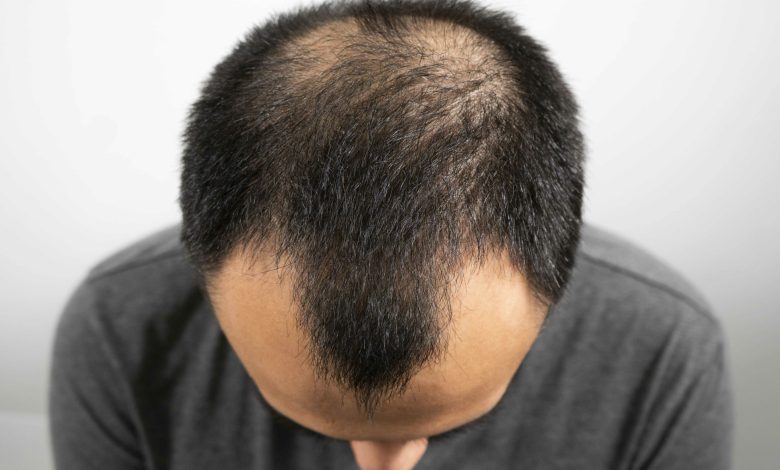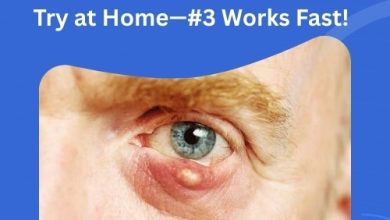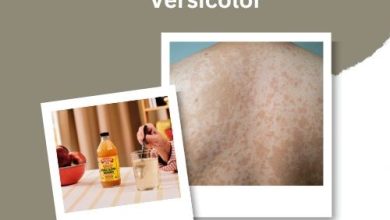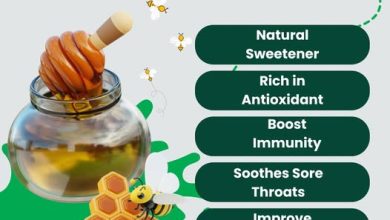From Sweetener to Scalp Savior: Stevia’s Surprising Hair Growth Secret Revealed!

For years, Stevia has been celebrated as a healthy sugar alternative, favored by fitness enthusiasts and diabetics alike for its zero-calorie sweetness. But recently, this humble green leaf has taken an unexpected turn in the beauty and wellness world — emerging as a potential natural solution for hair growth. Yes, the same plant that sweetens your coffee might just help you achieve thicker, healthier, and more vibrant hair.
The science, benefits, and real-world applications of Stevia for hair growth. From its powerful antioxidant compounds to DIY scalp treatments, let’s uncover how this plant is transforming from a kitchen staple into a scalp savior.
1. What Is Stevia? A Quick Refresher
Before we dive into its hair-boosting potential, let’s take a closer look at what Stevia actually is.
Stevia rebaudiana, a plant native to Paraguay and Brazil, has been used for centuries by the indigenous Guaraní people for its sweetening and medicinal properties. Its leaves contain compounds called steviol glycosides, which are 50 to 300 times sweeter than sugar but without the calories.
Today, Stevia is widely cultivated and used as a natural sugar substitute, found in countless foods, beverages, and dietary products. However, beyond its sweet taste, modern research has uncovered impressive bioactive properties — including anti-inflammatory, antioxidant, antimicrobial, and wound-healing effects. These same properties, as it turns out, are key to supporting a healthy scalp and hair growth cycle.
2. How Hair Growth Works (and Why It Stops)
To understand Stevia’s role in hair growth, it helps to grasp the basics of how your hair grows.
Each strand of hair goes through a three-phase cycle:
- Anagen (Growth Phase): Lasts 2–6 years, during which the hair actively grows from the follicle.
- Catagen (Transition Phase): Lasts about 2–3 weeks, as growth slows and the follicle begins to shrink.
- Telogen (Resting Phase): Lasts around 3 months, after which the hair falls out and new hair begins to grow.
Hair loss occurs when this cycle is disrupted — often due to factors like:
- Hormonal imbalances (especially DHT, a testosterone derivative)
- Inflammation and oxidative stress
- Poor scalp circulation
- Nutrient deficiencies
- Chronic stress or illness
Here’s where Stevia steps in. Its unique natural compounds can help reduce scalp inflammation, improve blood flow, and support hair follicle health, potentially restoring balance to the hair growth cycle.
3. The Science Behind Stevia’s Hair Growth Potential
So, what makes Stevia such a promising ingredient for hair health? Let’s break down its scientific superpowers.
a. Rich in Antioxidants
Stevia leaves are loaded with polyphenols, flavonoids, and other antioxidants that help neutralize free radicals — unstable molecules that damage hair follicles and accelerate aging.
Free radical damage contributes to thinning hair, scalp irritation, and premature greying. By protecting scalp cells from oxidative stress, Stevia may help maintain stronger, more resilient follicles.
b. Anti-inflammatory Action
Chronic scalp inflammation can choke follicles, preventing them from producing new hair. Research shows that Stevia possesses potent anti-inflammatory properties, similar to those found in turmeric or green tea. These properties may help soothe scalp conditions like dandruff, eczema, and seborrheic dermatitis, creating a healthier environment for hair to thrive.
c. Natural Antimicrobial and Antifungal Effects
Bacterial or fungal infections — especially from Malassezia or Candida species — can lead to hair loss and scalp irritation. Stevia extracts have been shown to have strong antimicrobial and antifungal effects, helping keep the scalp clean, balanced, and infection-free.
d. Improved Scalp Circulation
A healthy scalp equals healthy hair. Stevia’s bioactive compounds may stimulate microcirculation when applied topically, improving the delivery of oxygen and nutrients to hair follicles. Better blood flow can mean stronger roots and faster hair growth.
e. Hormonal Balance Support
While not a direct DHT blocker, Stevia has been linked to mild hormonal modulation. It may help reduce androgenic activity — the kind responsible for male and female pattern baldness — by supporting balanced endocrine function.
4. Nutritional Value of Stevia and Its Impact on Hair Health
Although Stevia is mainly known for its sweetening compounds, it also contains a surprising range of vitamins, minerals, and phytonutrients beneficial for hair:
| Nutrient | Benefit for Hair |
| Vitamin C | Boosts collagen for stronger hair shafts |
| Calcium | Supports follicle health and strength |
| Magnesium | Improves circulation and reduces scalp inflammation |
| Zinc | Encourages repair and hair growth |
| Iron | Improves oxygen supply to follicles |
| Flavonoids | Protect against oxidative stress |
While Stevia doesn’t replace a balanced diet, it can be a valuable supplement to support your hair from the inside out.
5. Stevia for Hair Growth: How to Use It
Stevia’s versatility makes it easy to incorporate into your hair care routine — whether through DIY masks, rinses, or serums. Here are some of the most effective ways to use it:
a. Stevia Hair Rinse
This simple remedy helps detoxify the scalp and stimulate growth.
What You’ll Need:
- 2 tablespoons of dried Stevia leaves (or 1 teaspoon Stevia powder)
- 2 cups of hot water
How to Use:
- Steep the leaves or powder in hot water for 15–20 minutes.
- Allow it to cool, then strain.
- After shampooing, pour the rinse over your scalp and hair.
- Massage gently and let it sit for 5–10 minutes before rinsing with water.
Benefits:
Cleanses buildup, enhances scalp circulation, and leaves hair smooth and shiny.
b. Stevia and Aloe Vera Hair Mask
A nourishing mask that hydrates the scalp and strengthens follicles.
Ingredients:
- 1 tablespoon Stevia powder
- 2 tablespoons Aloe Vera gel
- 1 tablespoon coconut oil
Instructions:
- Mix all ingredients into a smooth paste.
- Apply evenly to your scalp and hair.
- Leave for 30–45 minutes, then rinse with mild shampoo.
Benefits:
Reduces dandruff, soothes irritation, and supports thicker hair growth.
c. Stevia Infused Hair Oil
This is perfect for deep nourishment and scalp rejuvenation.
Ingredients:
- ½ cup coconut or olive oil
- 1 tablespoon crushed Stevia leaves
How to Make:
- Heat the oil slightly and add Stevia leaves.
- Let it infuse for 24–48 hours in a glass jar.
- Strain before use.
How to Apply:
Massage into your scalp 2–3 times a week and leave overnight for best results.
Benefits:
Encourages new growth, strengthens roots, and enhances shine.
d. Stevia Shampoo Add-On
If you’re short on time, just add a teaspoon of Stevia extract or powder to your favorite mild shampoo. It will help reduce itchiness and improve scalp health with each wash.
6. What Does Research Say?
While human studies specifically on Stevia and hair growth are limited, several scientific investigations support its underlying properties relevant to hair care.
- A 2018 study published in the Journal of Medicinal Plants Research found that Stevia extract demonstrated strong antioxidant and antibacterial properties, comparable to green tea.
- Another study in Pharmacognosy Reviews (2019) highlighted Stevia’s anti-inflammatory and wound-healing potential, suggesting its use in promoting tissue repair — including scalp regeneration.
- Additionally, Stevia’s flavonoids and terpenes were shown to reduce oxidative damage in animal models, a mechanism crucial for maintaining healthy follicles.
Though more direct studies are needed, the evidence suggests Stevia’s combination of antioxidant, antimicrobial, and regenerative effects could significantly benefit hair health.
7. Real-Life Testimonials: The Buzz About Stevia Hair Treatments
Online forums, beauty blogs, and social media platforms are buzzing with positive feedback from people experimenting with Stevia for hair growth. Many report that Stevia-based rinses and oils have helped reduce hair fall, dandruff, and scalp irritation — while leaving their hair softer and shinier.
For example:
- A Reddit user shared that a homemade Stevia rinse reduced her chronic dandruff within two weeks.
- A YouTube beauty vlogger demonstrated noticeable new baby hair growth after using a Stevia-Aloe scalp mask for a month.
- DIY naturalists praise Stevia as a “hidden gem” in their hair care routine — affordable, gentle, and surprisingly effective.
While these are anecdotal experiences, they hint at Stevia’s potential to become a natural hair care hero.
8. Combining Stevia with Other Natural Hair Boosters
To maximize its benefits, Stevia can be combined with other natural hair growth ingredients, such as:
| Ingredient | Benefit | How to Combine with Stevia |
| Rosemary oil | Stimulates follicles and boosts circulation | Add 3–4 drops to Stevia-infused oil |
| Castor oil | Thickens and strengthens hair | Mix equal parts with Stevia oil |
| Green tea | Rich in antioxidants | Use as a rinse mixed with Stevia |
| Onion juice | Boosts keratin and regrowth | Blend with Stevia extract for scalp mask |
| Fenugreek (Methi) | Prevents dandruff and promotes growth | Combine with Stevia powder and apply weekly |
These combinations amplify Stevia’s scalp-healing effects, helping you achieve visible hair transformation.
9. Safety and Side Effects
Stevia is generally considered safe for both dietary and topical use, but it’s important to use it correctly.
Potential considerations:
- Always do a patch test before applying Stevia-based treatments to ensure no allergic reactions.
- Use pure Stevia extract or dried leaves, not the commercial sweetener blends that often contain additives like maltodextrin.
- Avoid overuse — 2–3 applications per week are sufficient for most people.
- Pregnant or breastfeeding women should consult a healthcare professional before starting new herbal remedies.
10. The Future of Stevia in Hair Care
With the growing trend toward clean beauty and natural hair solutions, Stevia’s entry into the hair care market seems inevitable. Cosmetic researchers are already exploring Stevia-based shampoos, conditioners, and serums, focusing on its soothing, antimicrobial, and restorative properties.
In the near future, we may see Stevia become as popular in hair care aisles as it already is in the sweetener section — marking a shift toward nature-powered innovation.
11. DIY Stevia Hair Growth Recipe (Weekly Routine)
Here’s a complete at-home routine you can try for a month:
Step 1: Stevia Scalp Detox (Weekly)
- Mix 1 tsp Stevia powder with warm green tea.
- Massage into your scalp for 5 minutes.
- Let it sit for 10 minutes and rinse.
Step 2: Nourishing Stevia Oil (Twice Weekly)
- Infuse Stevia leaves in coconut oil for 24 hours.
- Warm slightly before applying.
- Massage thoroughly and leave overnight.
Step 3: Strengthening Mask (Weekly)
- Blend 1 tbsp Stevia powder + 2 tbsp Aloe Vera gel + 1 tbsp castor oil.
- Apply from root to tip.
- Leave for 45 minutes and rinse with mild shampoo.
Follow this regimen consistently for 4–6 weeks to see improved scalp health and visible regrowth.
12. Final Thoughts: Stevia – The Sweet Secret for Stronger Hair
From sweetener to scalp savior, Stevia’s journey is nothing short of remarkable. Its combination of antioxidants, anti-inflammatory properties, and scalp-stimulating compounds makes it a promising natural remedy for hair growth and scalp rejuvenation.
While more clinical research is needed to fully validate its effects, the anecdotal evidence and scientific clues point in one clear direction — Stevia isn’t just for your tea anymore.
So the next time you reach for Stevia, remember: behind that sweet leaf lies the potential for healthier hair, happier scalp, and a natural glow that starts right at the roots.




